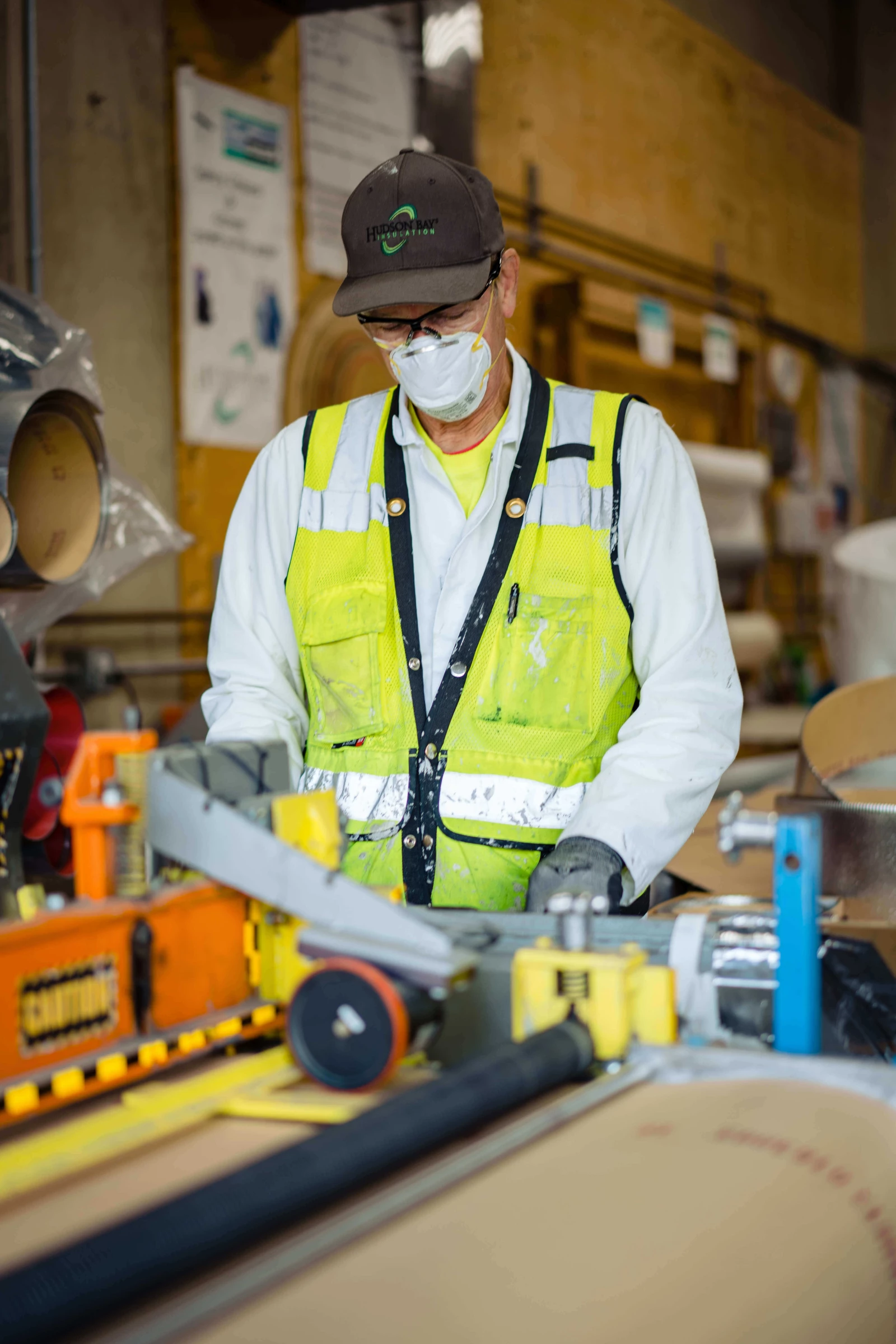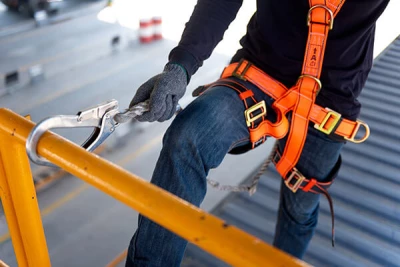Wildfire Smoke Awareness
Published 7.4.2023
As we all know, the PNW has been severely affected by wildfires over the past few years. There are many hazardous chemicals in wildfire smoke, the main harmful pollutant for people who are not very close to the fire is "particulate matter" - the tiny particles suspended in the air. The particles of concern are identified as "PM2.5".
Breathing in PM2.5 can lead to a range of health problems, including:
- Persistent coughing
- Difficulty breathing
- Heart failure
- Phlegm
- Bronchitis
- Reduced Lung Function
- Wheezing
- Aggravated Asthma
- Death
The greater the concentration of particulate matter in the air, the greater the respiratory hazard is for you. The exposure to wildfire smoke is increasing every year and potentially presents serious health risks to all workers, especially those who work outside.
When there is a respiratory warning issued for wildfire smoke, the project management team will determine the air quality for exposure to PM2.5 before each shift and periodically therefore using AirNow, Air Quality Maps, or Oregon Air Quality Today.
We will communicate the exposure controls when the PM2.5 levels exceed the AQI of 69 or higher, by text, email, or phone. The controls include:
- Reducing, rescheduling, or relocating your work as best as possible.
- Reducing the work intensity or increasing the amount of rest & break periods
- Encourage the use of N95 or KN95 respirator masks.
We recognize that everyone is going to have different and varying levels of sensitivity to the wildfire smoke, some groups may be more sensitive to the smoke due to underlying health conditions while others may not.
We encourage each employee to inform a member of their management team when air quality is worsening, or adverse symptoms such as, but not limited to, asthma attacks, difficulty breathing, or chest pain are noticed while being exposed to wildfire smoke.
REMEMBER THIS!
SURGICAL MASKS OR ITEMS WORN OVER THE NOSE AND MOUTH, SUCH AS SCARVES, T-SHIRTS, AND BANDANAS, WILL NOT PROVIDE PROTECTION AGAINST WILDFIRE SMOKE. N95 OR KN95 FILTERING FACEPIECE RESPIRATORS ARE HIGHLY ENCOURAGED FOR USE IN AREAS WHERE THE AQI IS ABOVE 69.
Dropped Objects
Published 7.11.2023
Dropped objects have been a problem for as long as the force of gravity has existed and when materials, tools, debris, or equipment are dropped, they can cause serious injuries or even death. In 2021, there were 227 workplace fatalities resulting from "being struck by falling objects".
When you think about objects falling and causing a fatality or injury to people below, you think about the larger material or tools. But that is not how it works. Many times, injuries and fatalities can be caused by the simplest hand tool or small object. It all depends on where, how, and the pace at which the object hits someone. Some common dropped objects that have been known to cause harm include:
- Drills, hammers, and pliers
- Spray cans
- Water bottles
- Bolts, screws, and nails
- Tape measurers
- Cell phones
- Rolls of tape
- Knives
- Flashlights
Every one of those items listed above has caused injuries, even something as small as a screw. There is always a chance of an injury to anyone who is below an overhead worker. These dropped object injuries range from minor to severe, causing such harm as:
- Bruises
- Neck and back injuries
- Brian injuries
- Broken bones
- Sprains
- Permanent Paralysis
- Cuts and lacerations
- Concussions
- Death
So now that we know some of the risks and the damage that can be done, what can we do to ensure we keep our tools, equipment, and material from injuring someone else?
First, we try to eliminate the hazard by removing objects and tools from higher levels, scaffolding, or MEWPs that do not need to be there. This is always the best option.
If we can't do that, then we look at engineering controls such as erecting barricades or delineation zones limiting access below our work area. Another engineering control si the use of tool tethers or anchors for tools and objects that are being used on a higher work level.
The last line of defense is PPE. Wearing a safety helmet or hard hat will only limit the damage a dropped object does, but it will not prevent it from happening. Rely on eliminating the hazard or installing engineering controls to reduce the chance of objects striking the ground instead of PPE to lessen the blow.
REMEMBER THIS!
THE MOST IMPORTANT TIP IS TO STAY OBSERVANT OF WHAT AND WHO IS AROUND YOU. THE TOOLS THAT ARE OUT AND NOT BEING USED, THE PEOPLE WHO ARE BESIDE AND BENEATH YOU. A LOT OF INJURIES CAN BE AVOIDED WHEN RESPONSIBILITY AND CAUTION ARE PUT FIRST. IF YOU SEE A TOOL OR PIECE OF EQUIPMENT LAYING OUT THAT COULD POSSIBILY FALL OR BE TRIPPED OVER, PICK IT UP AND MOVE IT TO A SAFE LOCATION.
Understanding an SDS
When it comes to exposure to hazardous materials, it doesn't matter if you work in the field, the warehouse, the office or even in your own home. It is extremely important to understand what and how the effects of that material could harm you or others.
One way to do that is to read the Safety Data Sheet (SDS). The SDS's of today utilize a universal format that contains 16 sections including pictograms that detail the type of hazard it is.
Depending on what, where and how you are using hazardous products, there are 5 important sections you should be familiar with to ensure your safety.
- First Aid: basic first aid information is available on the product label, but the SDS will provide more detail on the symptoms of exposure, as well as greater detail for initial treatment.
- Firefighting: some chemicals require specific firefighting techniques or create special hazards when involved in a fire. The information in this section instructs firefighters on suitable fire extinguishing techniques.
- Spills: spills may necessitate special handling procedures for PPE or those responding. Methods for containing and cleaning up a release are also described.
- Storage and Handling: the segregation of incompatible materials and other safe storage procedures are detailed.
- Routes of Exposure: more in-depth information on how the chemical can affect you, including exposure limits and the effects of acute and chronic exposure.
A very important aspect of our Hazardous Communication plan is to ensure that all employees understand that they have a right to understand what products they are working with and how the SDS is always available for you to review. You can instantly review all the products we work with in the LMS - simply click on the SDS tab and start to type the first few letters of the product you are using in the search bar to narrow the field. Once you find your product, click on the hyperlink to the right to access the SDS.
REMEMBER THIS!
ALWAYS READ THE SDS BEFORE USING ANY CHEMICAL OR SUBSTANCE THAT COULD CAUSE HARM TO YOU OR SOMEONE ELSE.
Mental Health & Suicide Prevention
Published 7.25.2023
Over the past several years we have chosen to create and engage in conversations around very difficult and often ignored topics: mental health and suicide prevention. We are more vulnerable than we think we are or maybe than we want to admit to sometimes, however the statistics tell a different story. The CDC states that construction has the highest suicide rate across all industries. That is unacceptable.
We want to provide you with a way to address these issues and to recognize the signs and symptoms of someone who may be struggling. Once recognized you can then get the proper help to make sure we all go home to our friends and family every day.
Warning Signs
- Talking about self-harm
- Withdrawing from others
- No hope for the future
- Talking about being a burden
- Increased tardiness or absenteeism
- Self-criticism, self-hatred
- Self-destructive behaviors
- Decreased productivity
- Extreme mood swings
- Increased alcohol and drug use
Prevention Tips
- Don't ignore it - speak up if you're worried
- Inquire why they don't seem like themselves
- Offer help and support
- Show your concern, that you've noticed they are acting differently
- Respond quickly if you believe your friend/coworker(s) is in crisis
- Call the suicide prevention hotline or crisis text line for ideas to help your coworker
It may be nothing, and there is no way to know without asking. You cannot plant the idea of suicide into someone's head - but you can potentially stop them by asking about it.
If a coworker, friend, or family member talks about hurting themselves or wanting to die, take the information seriously. Reach out. Ask if they would like to talk. Listen to them. Suggest they call 1-800-273-8255 (TALK) or text "HELLO" to 741741 to connect to immediate support systems and follow up with them.





